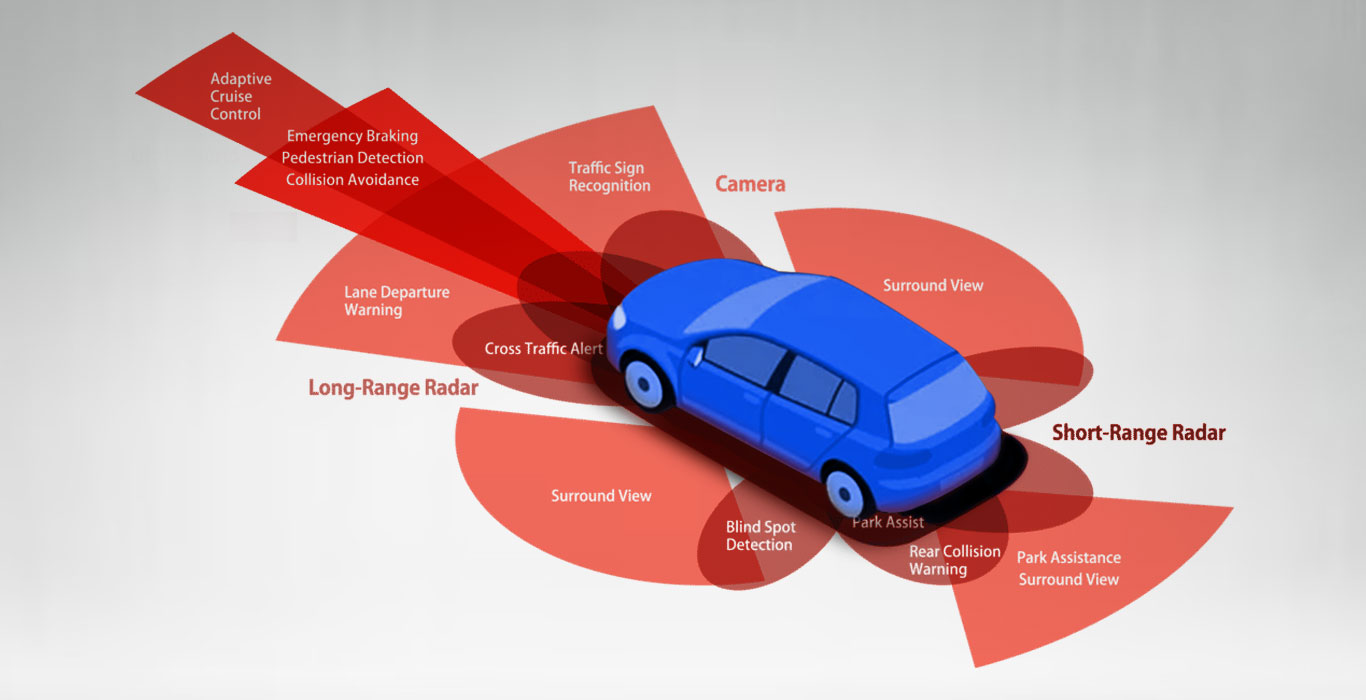ADAS – The New Assisted Technology for Automobiles
Introduction
ADAS stands for ‘Advanced Driver Assistance System’ technology in automobiles. It is a technology to assist drivers in safe handling of vehicle and maintaining on-road safety. This system uses automated technology, such as sensors, cameras and radars, to detect nearby obstacles and alert the driver.
Depending on the level of ADAS technology installed, a car can either warn the driver through sounds, vibrations, and signals on the display or incase of grave danger, take complete control of the car to prevent any mishap.
The ADAS technology was introduced in India through ‘MG Gloster’ by MG Motors in 2021, which then was implemented by various brands such as Honda, Hyundai, Mahindra etc. In India.
Currently, Level 1 and 2 ADAS features are available in cars.
Let’s dive into the type of ADAS features that are installed in cars these days for our safety: -
- Anti-lock Braking System (ABS) – ABS is a vital safety feature in recent cars. It prevents the wheels from locking when you apply the brakes instantly. It lets the driver control or ‘steer’ the vehicle while the brakes are still being applied, thereby reducing the braking distance.
- Adaptive Cruise Control – This ADAS feature automatically adjusts the vehicle speed to maintain a safe distance from vehicles driving ahead and stay within the same desired speed limit.
- High Beam Assist – This smart feature automatically switches the headlight setting to ‘low beam’ from ‘high beam’ when it detects a vehicle ahead and again switches it back to ‘high beam’ once the oncoming vehicle passes by. This feature is useful when you are driving the vehicle in areas where there are no street lights or during night rides.
- Blind Spot Detection – The blind spot detection or blind-spot monitoring is a sensor that is available beneath the outside rear view mirror. This sensor detects other vehicles located in the monitored area to the driver vehicle to alert the driver in case the two cars are about collide with each other. It gives warning sign to the driver which could be through a visual sign, sound alert or seat vibration.
- Automatic Emergency Braking System – This ADAS feature automatically reduces the car speed and eventually applies brakes to stop the car in the event that the driver does not respond to obstruction ahead. In luxury cars, if the car detects any obstacle, the seat belts automatically tighten and seat positions adjust to reduce the chance of injury.
- Hill Start and Decent Control – This feature is activated when a car sensor detects any slope. The car automatically stops from rolling back when ascending and controls the speed when descending.
- Lane Keeping Assist - Lane-Keeping Assist uses cameras to monitor the car in case it is deviating from the lane going towards left and right. It alerts the driver by giving warning sign through symbol or sound system so that the vehicle can be directed back to its lane.
- Tyre Pressure Monitoring System (TPMS) – This ADAS technology is available in cars nowadays to determine the normal tyre pressure range. The driver can monitor the tyre pressure and in case of a sudden drop, he/she is notified through a pictogram display, gauge, or low-pressure warning signal at their instrument cluster.
